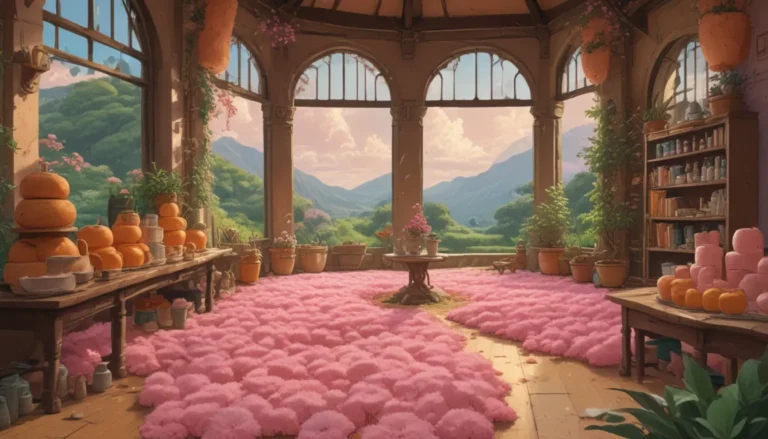A Comprehensive Guide to Growing and Caring for Gaura (Beeblossom)

Are you looking for a showy and low maintenance perennial to add to your garden? Look no further than gaura, also known as beeblossom. This North American native plant is highly popular for its waving wands of delicate flowers that resemble clouds of butterflies. With a long flowering season that lasts from early summer to frost, gaura is a favorite among bees, butterflies, and hummingbirds while being resistant to herbivores like deer and rabbits.
In this detailed guide, we will walk you through everything you need to know about growing and caring for gaura plants. So, if you are ready to add this stunning perennial to your garden, read along to discover all the tips and tricks!
What Is Gaura?
Gaura, scientifically known as Oenothera lindheimeri, is an herbaceous perennial species known for its open form with long, waving wands of delicate, butterfly-like flowers. These flowers come in various shades from cherry to pale pink, white, and unique bicolor combinations. The plant branches densely, sending up masses of leaning stems that are perfect for cottage gardens, wildflower gardens, or xeriscapes. Additionally, gaura is a resilient, fast-growing plant that thrives in high heat, hot soil, and humidity, making it an ideal choice for gardeners in hot climates.
Cultivation and History
This graceful prairie plant is native to Louisiana, Texas, and Mexico and is named after Ferdinand Jacob Lindheimer, a German-born botanist known for collecting plants primarily from the Texas frontier. Over the years, gaura has increased in popularity for home gardens, leading to the introduction of more compact cultivars suitable for beds, borders, and containers. The plant was awarded the Royal Horticultural Society’s Award of Garden Merit in 1993 and has since become a favorite among gardeners.
Gaura Plant Propagation
Gaura plants can be easily propagated from seed or via cuttings in spring. Basal or softwood cuttings are ideal for propagating gaura, while division can be challenging due to the plant’s taproot. Seeds can also be sown in spring or fall for beautiful blooms in the first year. By following these simple propagation methods, you can grow a thriving gaura garden in no time.
How to Grow Beeblossom Flowers
Gaura plants prefer fertile, well-draining soil with full sun exposure for optimal growth. While they are drought-tolerant, gaura flowers best with regular moisture, making it essential to water deeply when the soil starts to dry out. Additionally, using low-growing perennials as support for larger gaura varieties can help keep the plants upright and thriving. Whether you are growing gaura in the ground or in containers, providing the right growing conditions is key to a successful garden.
Growing Tips
To ensure your gaura plants remain healthy and robust, consider the following growing tips:
- Water gaura plants deeply when the top soil starts to dry out.
- Support large gaura varieties with low-growing woody perennials for added stability.
- Choose dwarf cultivars for beds and borders and full-sized plants for areas where they can spread freely.
- Gaura plants thrive in hot, humid climates, making them an excellent choice for gardens with similar conditions.
By following these growing tips, you can enjoy a vibrant and thriving gaura garden throughout the season.
Pruning and Maintenance
While deadheading gaura plants is not necessary, cutting back the flower stems in midsummer can encourage reblooming within a few weeks. For larger varieties, pruning back the foliage after the first hard frost or at the end of the flowering season can help maintain the plants’ tidy appearance. Additionally, providing the right nutrients and protection against pests and diseases can ensure your gaura plants remain healthy and vibrant.
Beeblossom Cultivars to Select
Gaura plants come in various cultivars, each with its unique features and characteristics. Some popular cultivars include ‘Gambit,’ ‘Rosy Jane,’ and ‘Siskiyou Pink,’ each offering a different color palette and growth habit. By selecting the right cultivar for your garden, you can create a stunning display of gaura plants that add color and beauty to your outdoor space.
Managing Pests and Disease
While gaura plants are generally easy to care for, they can be susceptible to pests like aphids, spider mites, and whiteflies. Keeping an eye out for these common pests and taking preventive measures can help protect your plants from infestations. Additionally, gaura plants may be prone to fungal diseases like powdery mildew and rust, which can cause stem collapse and yellowing foliage. Using natural remedies like neem oil and maintaining proper growing conditions can help prevent and treat these common issues.
Best Uses for Gaura Flowers
Gaura plants are versatile and can be used in various garden settings, including mixed beds, containers, foundations, and cottage gardens. Their loose, airy appearance makes them a perfect complement to annuals, grasses, and other perennials. Whether you choose to grow gaura in a large drift or as a single specimen, these plants can add color, movement, and beauty to any garden space.
Conclusion
In conclusion, gaura plants are a fantastic addition to any garden, offering showy blooms, low maintenance care, and a long flowering season. By following the tips and guidelines outlined in this comprehensive guide, you can grow and care for gaura plants successfully in your garden. Whether you are a seasoned gardener or a novice enthusiast, gaura plants are sure to delight and impress with their delightful flowers and graceful appearance. So, why not add a touch of whimsy and charm to your garden with gaura plants today?
Remember to share with us your experience growing gaura plants in the comments section below. We would love to hear about your gardening adventures and see how gaura has transformed your outdoor space. Happy gardening!





